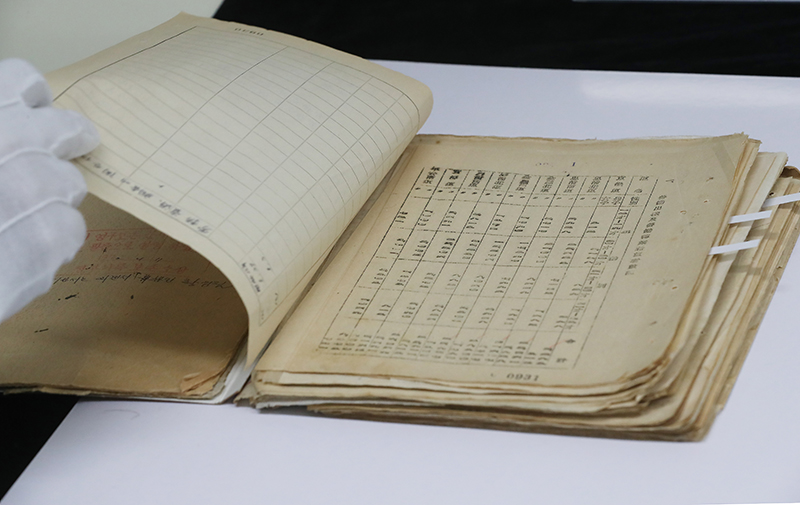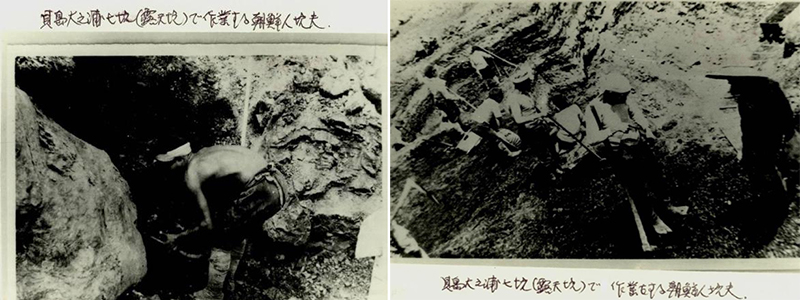
The National Archives of Korea on Oct. 31 made public original records on Japan's wartime use of forced Korean labor kept by the Japanese Government General of Korea during the Japanese occupation era (1910-45). (Yonhap News)
By Xu Aiying and Lee Hana
Bilateral relations with Japan have seen little improvement since the Korean Supreme Court last year upheld a verdict ordering a Japanese corporation to pay reparations to Koreans it forced to perform labor during World War II. The release of original records on Oct. 31 by the National Archives of Korea (NAK) on Japan's practice of using forced Korean labor could provide another twist in this sensitive matter.
Titled "An Inquiry into Labor Resources," the documents were commissioned by the Japanese Government General of Korea in 1940 from March through September to conduct a census on the workforce in Joseon, Korea's name at the time. They include official documents collected from each province and labor statistics for the entire country.
According to the records, the Japanese colonial government in March 1940 ordered each province to collect data on its workforce categorized by gender and age. The results showed a combined 1,160,177 workers consisting of 927,536 men and 232,641 women, comprising about 5% of the overall Joseon population overall of 23,547,465. When children, the elderly and women age 20 or older were excluded from the population total, the workforce accounted for around 10%.
The records also show that the number of the expected workforce was 263,081 -- 242,314 men and 20,767 women. The figure exceeded Japan's labor mobilization plans at the time of 85,000 Joseon workers in 1939, 88,000 in 1940 and 81,000 in 1941, proving that Japan greatly exceeded its labor target in 1941.
NAK said the statistics in the documents are evidence that Joseon laborers were recruited by force.

These photos of a worker in a coal pit at a mine in Kaijima Onoura, Japan, are part of a collection donated to the National Archives of Korea by the late Kim Gwang-yeol, who had thousands of records on Korean victims of forced labor by Japan. (National Archives of Korea)
The archives also released part of 2,337 records related to such victims donated by the late Kim Gwang-yeol including photos and floor plans. Moving to Japan in 1943 to teach in Fukuoka, he studied and collected records of Japan's forced labor, focusing on the town of Chikuho, one of Japan's three major mining sites.
Kim's collection includes a photo of a worker in a coal pit at a mine in Kaijima Onoura, Japan, and his diary from 1976 gives details on how he got a hold of the worker directory, which could allow researchers to identify more forced labor victims from Korea.
"These records prove that Japan forcibly recruited Joseon laborers and show how calculating and detailed the Japanese were in running the operation," NAK said in a statement.
This year, the archives organization will upload on its website records from Kim's collection including 248 forced labor directories and health insurance ledgers containing personal information on around 140,000 workers.
xuaiy@korea.kr